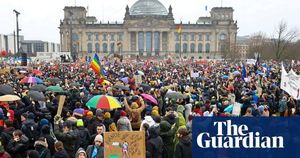NEW DELHI: On Saturday, Finance Minister Nirmala Sitharaman presented the Union Budget 2025 with the goal of fostering inclusive growth for all segments of society. The budget makes notable commitments to empower the poor, youth, farmers, and women, encapsulated by the mantra 'garib, youth, farmers, and nari'. Amidst the backdrop of political protests led by opposition members, Sitharaman laid out her vision for economic growth and structural reforms.
"Our economy is the fastest growing among all major economies…We see the next 5 years as a unique opportunity to realise sabka vikas, stimulating balanced growth of all regions,” Sitharaman stated, emphasizing the importance of broad-based development.
With the total government expenditure set at ₹50.65 trillion, up from ₹47.16 trillion, the fiscal deficit has been targeted at 4.4% of GDP, showcasing the government's plans for fiscal consolidation. Important announcements concerning tax reforms are expected to resonate with middle-class citizens, who have long sought relief from taxation burdens.
The highlight of the budget was the significant tax exemption for individuals earning up to ₹12 lakh annually. Major tax reforms include the restructuring of tax slabs, which simplifies the tax system and provides notable relief for the middle class. Under the new income tax regime, no tax will be levied on incomes up to ₹12 lakh, with even higher allowances due to standard deductions allowing for individuals to earn up to ₹12.75 lakh without tax liabilities. Sitharaman reported, "A taxpayer with income of ₹12 lakh will also benefit by ₹80,000 due to the slab rate changes.”
Expanding on tax incentives, Sitharaman introduced deductions for green investments to align with India’s climate commitments, encouraging both individuals and businesses to contribute to environmental initiatives. The revised tax slabs are as follows:
- Income between nil to ₹4 lakh – Nil
- Income between ₹4 lakh to ₹8 lakh – 5%
- Income between ₹8 lakh to ₹12 lakh – 10%
- Income between ₹12 lakh to ₹16 lakh – 15%
- Income between ₹16 lakh to ₹20 lakh – 20%
- Income between ₹20 lakh to ₹24 lakh – 25%
- Income above ₹24 lakh – 30%
This comprehensive approach was positively received by various political leaders, with Union Minister Amit Shah celebrating the budget as beneficial for the middle class. He stated, "The middle class is always on PM Modi’s heart. Zero income tax till ₹12 lakh income is significant for the financial well-being of many.”
Continuing with agrarian reforms, the budget allocates support for farmers through the PM Dhan Dhanya Krishi Yojana, aimed at boosting productivity across low-yield districts. Sitharaman pledged to raise direct income support and introduced measures aimed at enhancing sustainable agricultural practices with tax incentives for eco-friendly farming techniques. The loan limit for the Kisan Credit Card scheme has also been increased from ₹3 lakh to ₹5 lakh, facilitating access to credit for farmers.
Recognizing the pivotal role of the MSME sector, the budget introduces measures to ease access to credit and enhances classification limits accordingly. The overall support aims to boost entrepreneurship and stimulate job creation. Sitharaman emphasized, "MSMEs currently over one crore registered units generate 36% of our manufacturing...this will provide confidence to grow and generate employment for our youth.”
Further reflecting on the government’s goals for economic diversification, Sitharaman outlined plans for substantial investments in digital infrastructure including cybersecurity enhancements, with considerable increases earmarked for cybersecurity measures to protect sensitive data. Recognizing the transformative power of innovation, investments for digital literacy programs were also announced to prepare the youth for future jobs.
Shifting focus to health and education, the budget pledges increased funding for the National Health Mission to improve healthcare access, particularly for underserved regions. Skill development initiatives draw attention as well, with vocational training budgets reflecting the need to equip the workforce with relevant skills especially relevant to burgeoning sectors such as AI and green technologies.
Sitharaman also addressed social welfare schemes aimed at marginalised communities, stating, "We aim for increasing allocations for female empowerment and welfare.” Programs targeting financial inclusion for women and rural populations highlight the government’s commitment to fostering equality.
Criticism from the opposition framed the budget as insufficiently addressing unemployment and pressing needs beyond tax reforms. Congress MP Gaurav Gogoi labeled it "the weakest Budget in the last ten years,” urging more significant focus on support measures for various economic sectors.
The budget aims to present India as a global player, fostering foreign investment and establishing free trade agreements with key partners. Provisions aimed to ease regulations for foreign investors were also commended, particularly for the technology and renewable energy sectors. Overall, the vision for Budget 2025 presents itself as not merely numbers but as a roadmap toward achieving sustainable growth, inclusive prosperity, and maintaining fiscal responsibility.
With the groundwork laid out, Budget 2025 seeks to position India strategically for long-term economic stability amid global challenges, making it both ambitious and aspirational.



